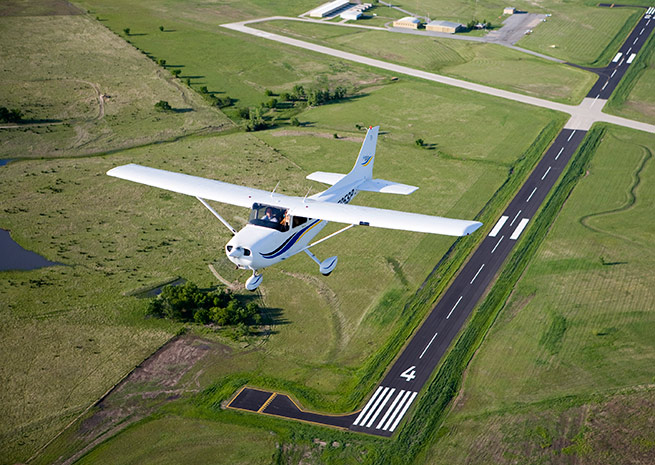The student pilot’s takeoff at the beginning of a session of checkride prep has been smooth and precise. Climbing smartly to a safe altitude, she guards the throttle with her right hand, taking a moment to trim off excess back-elevator pressure as the trainer climbs.
With the runway now out of sight behind the trainer, the pilot trainee lowers the nose briefly to clear the area ahead for traffic. Then she takes a quick glance back in the direction of the departure runway.
Why the rearward glance? To confirm that the aircraft is tracking the runway’s extended centerline—especially if the takeoff was performed in a crosswind.
“The climb with a wind correction angle should be continued to follow a ground track aligned with the runway direction,” notes Chapter 5 of the Airplane Flying Handbook. “However, because the force of a crosswind may vary markedly within a few hundred feet of the ground, frequent checks of actual ground track should be made, and the wind correction adjusted as necessary.”
No crosswind raking the runway today? That’s no reason to neglect ground track. (Failing to check the track is a commonly observed error.) The aircraft’s gyroscopic heading indicator may not yet be providing completely accurate directional information. Or, if your initial heading wandered a bit during the departure, your aircraft could already be misaligned with the departure course.
Keeping the aircraft positioned above the centerline of the departure runway is good practice for safety, the trainee’s instructor says. But if an airport control tower instructs you to “fly runway heading” after takeoff, should you still include a wind correction angle in your tracking method?
“No,” replies the student pilot, citing guidance from the Pilot/Controller Glossary: “When cleared to ‘fly or maintain runway heading,’ pilots are expected to fly or maintain the heading that corresponds with the extended centerline of the departure runway. Drift correction shall not be applied; e.g., Runway 4, actual magnetic heading of the runway centerline 044, fly 044.”
If your training is based at a large, spacious airport, you may not fully appreciate the importance of your tracking skills until you make your first takeoff from a small airfield bounded closely by tall trees, or with obstructions lining the departure course. Then you will be thankful that a good track has been second nature since your earliest training.




